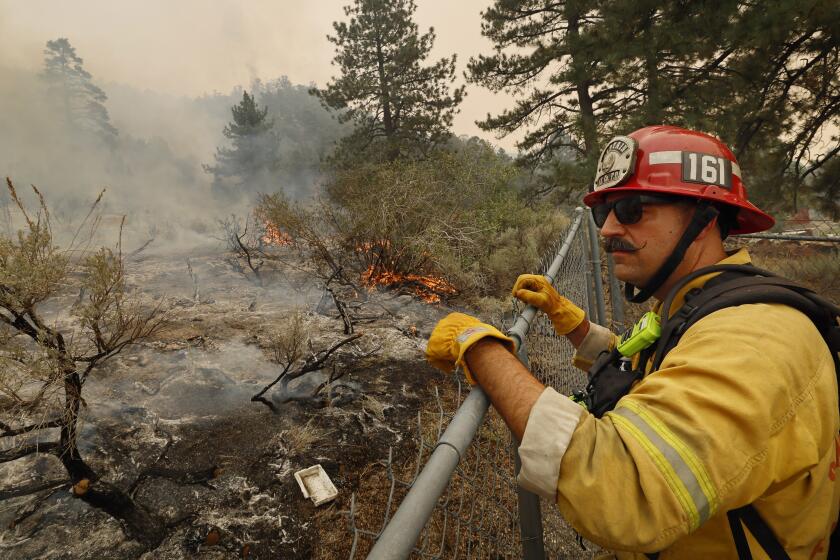Updating federal helmet standard
Almost every day at the Collision and Injury Dynamics lab in El Segundo, helmets are crashing into anvils. One day it could be full-face models. The next it’s partials and shorties. Whatever the helmet, it all ends the same, with a loud bam as it slams to a stop, then bounces and comes to a standstill.
Up close, it seems to happen fast, even if the helmet is moving just 13.4 miles per hour in its rush toward the flat metal anvil. According to the 1981 Hurt Study, 13.4 mph represents the 90th percentile of crash impacts, and flat pavement is the place a crash-involved helmet is most likely to touch down. So those are the most important criteria the Department of Transportation uses to see if helmets meet its Federal Motor Vehicle Safety Standard 218.
FOR THE RECORD:
Motorcycle gear: A story on motorcycle gear in the Oct. 10 Highway 1 section used an incorrect term. Helmets are not “DOT approved”; they are “DOT qualified.” Helmet manufacturers self-certify based on the Department of Transportation standard. —
This “DOT Standard” was first issued in 1974. It was revised in 1980 and again in 1988, but, like so many other aspects of motorcycle safety, it hasn’t been revised since then and is now overdue, said Dave Thom, longtime helmet researcher and Collision and Injury Dynamics partner.
Earlier this year, Thom and other scientists from the American Society for Testing and Materials submitted a list of recommendations for the update to the DOT, which isn’t likely to adopt a new standard for months if not years. Included on that list:
1) A positional stability, or roll-off, test to judge whether a helmet, when fastened, can still roll off a rider’s head.
2) Better labeling to make illegal, i.e. non-DOT-approved, helmets more easily identifiable to law enforcement.
Most riders are familiar with the “DOT Standard,” which is required for any helmet sold in the U.S. They may be less familiar with the other three standards at play in the U.S. -- that of the Snell Memorial Foundation, which has been issuing private, nongovernmental helmet performance standards for 50 years; the Economic Community of Europe standard (or ECE) used in 50-plus countries; and the British Standards Institution (or BSI) from England.
Although some riders believe that a helmet meeting a couple of standards offers more protection than a helmet that meets just one, Thom says that isn’t always true. In a 2005 study conducted for Motorcyclist magazine, Thom and his team smashed a couple of dozen helmets in “realistic tests that would be relevant to you or I falling off a motorcycle,” he said. The helmets that did the best were DOT only. Second, third and fourth places went to DOT/ECE, DOT/BSI and DOT/Snell, respectively.
“There’s no question that a Snell helmet will take more impact,” said Thom. “You can hit it more times in the same spot than a plain old DOT helmet, but the reality is, who cares? That doesn’t happen in real life.”
There are three main types of helmets: full-face, partial (or three-quarter) and half helmets, or shorties. According to Thom, the more you cover, the more you protect, though a partial-coverage helmet that meets the DOT standard gives riders almost all the protection of a full-face.
What makes a helmet work are its three primary components: a hard, thermoplastic outer shell to prevent penetration, an energy-absorbing expanded polystyrene liner to absorb impact and a strap.
Prices range considerably -- from $30 to $700 -- though more expensive doesn’t mean better in terms of impact protection.
“The standards drive the performance of the helmet. If you spend $700 for brand A and $600 for brand S and $200 for brand M, the performance is going to be very similar, assuming they all meet the same standard,” said Thom. “You’ll get something for your money -- nicer interiors, nicer finish -- but you don’t get two or three times as much protection by spending two or three times as much money.”
More to Read
Sign up for Essential California
The most important California stories and recommendations in your inbox every morning.
You may occasionally receive promotional content from the Los Angeles Times.










